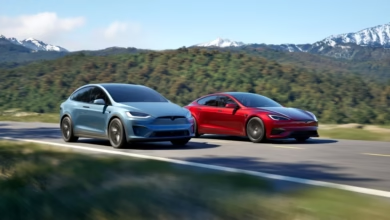Kia EV4 Review: Pricing, Features & Release Date

▼ Summary
– The 2026 Kia EV4 aims to bring affordable, long-range electric power to the mainstream compact sedan and hatchback segment, targeting 140 global markets.
– The EV4 will be sold as a sedan in the US and Asia (built in Korea) and as a hatchback in Europe (built in Slovakia), with no hatchback planned for North America.
– Pricing outside South Korea is unannounced, but US buyers can expect a range of $29,000 to $36,000, making it a competitive option in the EV market.
– The EV4 uses a cost-efficient 400-volt E-GMP platform with a new battery design and front-wheel-drive focus, prioritizing range over fast charging (30 minutes for 10-80% charge).
– Kia optimized the EV4 for range with tailored cell chemistries and a compact HVAC system, though real-world charging times may exceed ideal lab conditions.
The 2026 Kia EV4 represents a strategic move in the electric vehicle market, targeting affordability without compromising performance. Designed for global appeal, this compact sedan, or hatchback in Europe, aims to make long-range EV ownership accessible to a broader audience. With production split between Korea and Slovakia, Kia has tailored regional offerings to match consumer preferences, though North America will exclusively receive the sedan variant.
Pricing details remain under wraps for most markets, but South Korea’s figures suggest a starting range of $29,000 to $36,000 in the U.S. If Kia hits this mark, the EV4 could become a standout option in the competitive sub-$40,000 EV segment. Early adopters in Korea already have access, while international rollouts will continue over the coming months.
Efficiency Through Simplicity
Unlike its pricier siblings, the EV6 and EV9, the EV4 opts for a 400-volt architecture instead of an 800-volt system. This decision prioritizes cost savings, reflected in its more affordable positioning. Shared LG Energy Solutions batteries power the vehicle, but Kia has introduced optimized components, including a streamlined traction motor and charging system. By focusing on front-wheel-drive configurations, engineers reduced weight and complexity, though all-wheel-drive options may follow later.
Charging speeds reflect this trade-off: the EV4 requires 30 minutes for a 10–80% charge, compared to the EV6’s 18 minutes. Real-world conditions could extend this further, but Kia emphasizes range efficiency as the priority. A fourth-generation heat pump system improves cabin comfort while marginally increasing legroom, small but thoughtful upgrades for daily usability.
Balancing Performance and Practicality
Kia’s approach with the EV4 centers on delivering “acceptable range and charging time” rather than cutting-edge speed. While exact battery chemistry details remain undisclosed, the focus on energy density suggests a commitment to maximizing mileage per charge. The hatchback’s exclusion from North America may disappoint some, but the sedan’s sleek design and competitive pricing could win over budget-conscious EV shoppers.
As the automotive world shifts toward electrification, the EV4 positions itself as a pragmatic choice, proof that affordability and innovation can coexist. With global availability on the horizon, Kia’s latest offering could reshape expectations for entry-level electric vehicles.
(Source: Wired)

